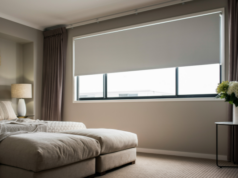
As residential building standards continue to evolve, so too does the focus on acoustic comfort. Whether it’s street noise, footsteps on upper floors or sound transfer between rooms, noise can significantly affect liveability, especially in increasingly airtight and compact Australian homes.
Acoustics are no longer considered a luxury. With updates to the National Construction Code (NCC), greater consumer expectations and growing interest in health-centered design, effective noise control is essential in both new builds and major renovations.
Updated regulations and standards
The latest version of the NCC, in effect from May 2025, includes revised performance requirements for sound insulation in multi-residential buildings. The NCC references updated acoustic standards, including AS/NZS ISO 717 Parts 1 and 2 (2024), which specify how to assess airborne and impact sound.
These benchmarks apply to Class 2, 3 and 9c buildings, including apartments, duplexes, townhouses and student housing.
For detached dwellings or single-storey homes, these standards are not mandatory but are increasingly specified as part of high-performance design.
Going beyond compliance
While the NCC defines minimum acceptable levels, many industry professionals and developers aim higher. The Association of Australasian Acoustical Consultants (AAAC) Star Rating System offers more detailed guidance for residential performance, ranging from 1 star (basic compliance) to 6 stars (premium acoustic separation).
In mid- to high-end apartment developments, a 5-star rating is becoming the new standard. Green Star and other sustainability certification systems also reward enhanced acoustic outcomes, particularly where they contribute to occupant wellbeing.
Targeted noise control strategies
Achieving good acoustic performance requires a deliberate, multi-layered approach across all aspects of a home’s construction. Key strategies include:
Wall and floor systems
- Use double-stud or staggered-stud walls to reduce vibration transmission.
- Install acoustic insulation within cavities, using dense, non-resonant batts.
- Select high-performance flooring underlays to reduce impact noise, especially in multi-level homes or apartments.
- Incorporate resilient mounts and separation layers in flooring systems to prevent structural bridging.
Plumbing and services
- Wrap pipework in acoustic lagging to limit water and drainage noise.
- Isolate ductwork and mechanical risers from internal walls and floors using vibration mounts.
- Position plumbing away from bedrooms or shared walls wherever possible.
External noise
- For homes near transport corridors or noisy environments, acoustic glazing and sealed window systems help limit intrusion.
- External barriers, such as fencing, landscaping or acoustic screens, can further mitigate outdoor noise sources.
Mechanical equipment
- Air conditioning units, pumps and mechanical systems should be sited with care, avoiding bedrooms and shared boundaries.
- Noise from plant equipment can often exceed acceptable levels, so acoustic enclosures or baffles may be necessary to comply with local council regulations.
Testing and verification
For buildings where acoustic compliance is mandatory, such as apartments and townhouses, on-site testing is a critical part of the commissioning process. Acoustic testing is required to verify both airborne and impact sound insulation under NCC FV5.
Lightweight construction systems can sometimes struggle to meet the required levels, making early engagement with an acoustic consultant vital. Consultants can assist with design detailing, materials selection and pre-construction modelling to reduce costly rework or retrofitting.
Why acoustics matter
Beyond regulatory compliance, good acoustic design enhances day-to-day comfort. It contributes to better sleep, improved concentration, and overall wellbeing, particularly in homes where multiple people live, work or study.
For developers and renovators, it also adds value. Homes and apartments that perform well acoustically tend to attract more interest and reduce the likelihood of post-occupancy complaints.
In the post-COVID era, with more Australians working from home and spending longer periods indoors, sound control is increasingly seen as a non-negotiable aspect of quality housing.
Practical tips for renovators and builders
When planning your next project, consider the following:
- Specify acoustic-rated building systems especially in multi-level or multi-residential builds.
- Include acoustic insulation and underlays in your base scope, not just as upgrades.
- Use tested and certified systems and follow manufacturer installation instructions closely.
- Engage an acoustic consultant early particularly on larger or compliance-sensitive projects.
- Factor in acoustic performance when selecting windows, flooring and mechanical systems.
Acoustics are not just about quiet, they’re about delivering healthier, more comfortable and more liveable homes. Whether you’re building from scratch or upgrading an existing dwelling, treating noise control as a core design element will ensure your home meets both current standards and future expectations.





